I am having trouble accessing a secret from an Azure key vault. I suspect the problem is that I don't adequately understand the terminology, so the arguments I'm supplying to various API calls are wrong.
Here's the basic code I'm using:
protected async Task<string> GetCommunityKeyAsync( UserConfiguration user )
{
var client = new KeyVaultClient(
new KeyVaultClient.AuthenticationCallback( GetAccessTokenAsync ),
new HttpClient() );
// user.VaultUrl is the address of my key vault
// e.g., https://previously-created-vault.vault.azure.net
var secret = await client.GetSecretAsync( user.VaultUrl, "key-to-vault-created-in-azure-portal" );
return secret.Value;
}
private async Task<string> GetAccessTokenAsync( string authority, string resource, string scope )
{
var context = new AuthenticationContext( authority, TokenCache.DefaultShared );
// this line throws a "cannot identify user exception; see
// below for details
var result =
await context.AcquireTokenAsync( resource, "id-of-app-registered-via-azure-portal", new UserCredential() );
return result.AccessToken;
}
Here is the exception that gets thrown:
Microsoft.IdentityModel.Clients.ActiveDirectory.AdalException
HResult=0x80131500 Message=unknown_user: Could not identify logged in user Source=Microsoft.IdentityModel.Clients.ActiveDirectory
StackTrace: at Microsoft.IdentityModel.Clients.ActiveDirectory.AcquireTokenNonInteractiveHandler.d__4.MoveNext() at System.Runtime.ExceptionServices.ExceptionDispatchInfo.Throw()
at System.Runtime.CompilerServices.TaskAwaiter.HandleNonSuccessAndDebuggerNotification(Task task) at Microsoft.IdentityModel.Clients.ActiveDirectory.AcquireTokenHandlerBase.d__57.MoveNext() at System.Runtime.ExceptionServices.ExceptionDispatchInfo.Throw()
at System.Runtime.CompilerServices.TaskAwaiter.HandleNonSuccessAndDebuggerNotification(Task task) at Microsoft.IdentityModel.Clients.ActiveDirectory.AuthenticationContext.d__37.MoveNext() at System.Runtime.ExceptionServices.ExceptionDispatchInfo.Throw()
at System.Runtime.CompilerServices.TaskAwaiter.HandleNonSuccessAndDebuggerNotification(Task task) at Microsoft.IdentityModel.Clients.ActiveDirectory.AuthenticationContextIntegratedAuthExtensions.d__0.MoveNext() at System.Runtime.ExceptionServices.ExceptionDispatchInfo.Throw()
at System.Runtime.CompilerServices.TaskAwaiter.HandleNonSuccessAndDebuggerNotification(Task task) at System.Runtime.CompilerServices.TaskAwaiter1.GetResult() at NextDoorScanner.ScannerJob.<GetAccessTokenAsync>d__21.MoveNext() in C:\Programming\CommunityScanner\CommunityScanner\ScannerJob.cs:line 197 at System.Runtime.ExceptionServices.ExceptionDispatchInfo.Throw() at System.Runtime.CompilerServices.TaskAwaiter.HandleNonSuccessAndDebuggerNotification(Task task) at System.Runtime.CompilerServices.ConfiguredTaskAwaitable1.ConfiguredTaskAwaiter.GetResult() at Microsoft.Azure.KeyVault.KeyVaultCredential.d__9.MoveNext() at System.Runtime.ExceptionServices.ExceptionDispatchInfo.Throw()
at System.Runtime.CompilerServices.TaskAwaiter.HandleNonSuccessAndDebuggerNotification(Task task) at System.Runtime.CompilerServices.ConfiguredTaskAwaitable1.ConfiguredTaskAwaiter.GetResult() at Microsoft.Azure.KeyVault.KeyVaultCredential.<ProcessHttpRequestAsync>d__10.MoveNext() at System.Runtime.ExceptionServices.ExceptionDispatchInfo.Throw()1.ConfiguredTaskAwaiter.GetResult() at Microsoft.Azure.KeyVault.KeyVaultClientExtensions.d__11.MoveNext() at System.Runtime.ExceptionServices.ExceptionDispatchInfo.Throw()
at System.Runtime.CompilerServices.TaskAwaiter.HandleNonSuccessAndDebuggerNotification(Task task) at Microsoft.Azure.KeyVault.KeyVaultClient.<GetSecretWithHttpMessagesAsync>d__65.MoveNext() at System.Runtime.ExceptionServices.ExceptionDispatchInfo.Throw()
at System.Runtime.CompilerServices.TaskAwaiter.HandleNonSuccessAndDebuggerNotification(Task task) at System.Runtime.CompilerServices.ConfiguredTaskAwaitable
at System.Runtime.CompilerServices.TaskAwaiter.HandleNonSuccessAndDebuggerNotification(Task task) at System.Runtime.CompilerServices.TaskAwaiter1.GetResult() at NextDoorScanner.ScannerJob.<GetCommunityKeyAsync>d__20.MoveNext() in C:\Programming\CommunityScanner\CommunityScanner\ScannerJob.cs:line 188 at System.Runtime.ExceptionServices.ExceptionDispatchInfo.Throw() at System.Runtime.CompilerServices.TaskAwaiter.HandleNonSuccessAndDebuggerNotification(Task task) at System.Runtime.CompilerServices.TaskAwaiter1.GetResult() at NextDoorScanner.NextDoorScannerJob.d__4.MoveNext() in C:\Programming\CommunityScanner\CommunityScanner\NextDoorScannerJob.cs:line 46 at System.Runtime.ExceptionServices.ExceptionDispatchInfo.Throw() at System.Runtime.CompilerServices.TaskAwaiter.HandleNonSuccessAndDebuggerNotification(Task task) at System.Runtime.CompilerServices.TaskAwaiter`1.GetResult() at NextDoorScanner.Program.Main(String[] args) in C:\Programming\CommunityScanner\CommunityScanner\Program.cs:line 22
I did some configuration, I thought involving registering my desktop as an Azure user, via powershell:
Login-AzureRmAccount // as I recall, this next line complained about the app ID already being defined New-AzureRmADServicePrincipal -ApplicationId 'id-of-app-previously-defined-via-azure-portal' Set-AzureRmKeyVaultAccessPolicy -VaultName 'vault-name' -ServicePrincipalName id-of-app-previously-defined-via-azure-portal -PermissionsToSecrets Get
I'm unclear if I'm supposed to be providing the vault key to GetSecretAsync(). I also wonder if I'm supposed to be doing something other than passing a newly-created UserCredential to AcquireTokenAsync(). Finally, I see references online to creating a storage account for use with key vaults, which I did, but I didn't create the vault I'm using "in" a storage account. And I'm not identifying the storage account in the code.
Help, or a reference to a really good example accessing key vaults from a console desktop app would be appreciated.




